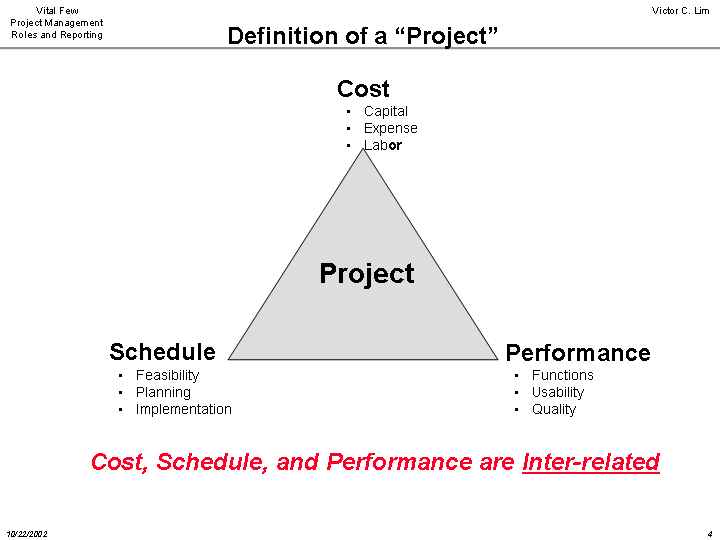 |
|
| What We Do | What We Have Done |
Case Studies | Why LimNorris? | Company Info | FAQ | Contact Us |
The Scenario: Managing growth!
In the 1990's our client’s strategic objective was to double revenue through acquisition and internal growth. As a result the number and size of projects significantly increased, straining the capabilities of the Information Services department to manage projects. Business unit executives were becoming frustrated. Information technology projects critical for growth were frequently late and over budget.
The Director of Information Services had also just completed the department’s strategic plan. To reduce on-going support cost, they decided to transition from custom-coded applications to packaged software. As a result, project management skills would become more important and programming skills less important.
The Challenge: Create project management expertise
Projects were the responsibility of the application development group. No one, however, had been trained in project management. The lead application designer typically took on the responsibility for coordinating project activities since no one else had it. Each project was managed independently and differently, depending on the application lead.
The department needed project management expertise to improve delivery of business critical projects and to support the transition to packaged software. The Director of I.S. formed a new group for project managers and had them report directly to him for visibility. LimNorris Consulting Group was hired to develop project management processes, train the new project managers on them, and deploy them throughout the department.
The Approach: Assess, implement, and institutionalize
Using a LimNorris checklist based on an industry standard called SEI Level 2 (Software Engineering Institute Capability Maturity Model Level 2) the team assessed the current level of project management, defined the desired level of project management, and identified major gaps. LimNorris determined that the best way to institutionalize new processes was to have the project managers, the people who would have to use them, write and pilot them.
A project was partitioned into three phases - Feasibility, Planning and Design, and Implementation. Procedures were written that described the activities that occurred during and the criteria to complete each phase. Active projects were used to create sample documents and pilot the procedures. Within six months, project management processes were developed and piloted.
A monthly project review meeting was created to review the status of all projects. Project Managers reported on: accomplishments, plan versus actual progress, risks, and mitigation plans. Before and after each of the first six meetings, LimNorris coached individual project managers to continue their training and institutionalize the new processes.
The Result: Disciplined project management

Project management expertise went from non-existent to a core asset. Projects were led by trained, dedicated project managers and schedule/cost performance significantly improved. Business executives even started utilizing I.S. project managers on non-technology projects.
|
Copyright 2002 Lim, Norris & Associates, Inc. All rights reserved.
|
|||||||||||||||||